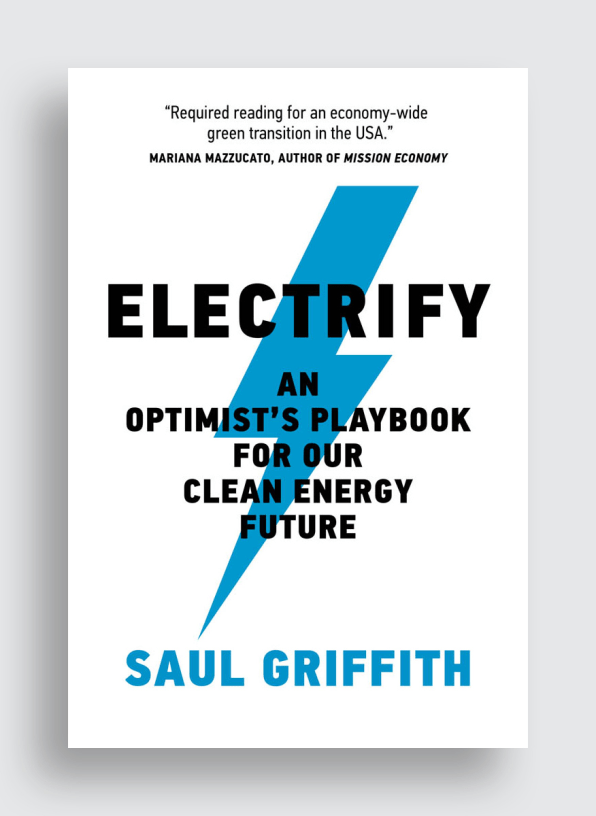Why your ‘personal infrastructure’ decisions actually do affect the climate
You probably don’t think of your car as infrastructure, or your stove, or your furnace. But they’re a critical part of the transformation that has to happen to address the climate emergency—and a handful of choices that consumers make, and that the government can back, have an outsize impact on the future of the climate.

[Photo: Clayton Boyd courtesy MIT Press]
In a new book, Electrify: An Optimist’s Playbook for Our Clean Energy Future, engineer and MacArthur “genius grant” recipient Saul Griffith shares a blueprint for how the U.S. can decarbonize using existing technology. The basic strategy is to electrify everything. The grid has to fully shift to clean electricity, which can eliminate huge amounts of the energy used now because fossil fuels don’t produce electricity efficiently (mining, refining, and transporting fossil fuels also uses large amounts of energy). Transportation has to shift to electric vehicles. Buildings also have to electrify.
All of this will require enormous systemic changes, including new policy and business models and a redesigned electric grid. But it also includes what Griffith calls “personal infrastructure.” These are the individual purchasing decisions that actually matter. “When you’re told to buy a stainless-steel bottle and recycle, there’s no amount of those tiny decisions that you can make that really makes a difference to your carbon intensity as an individual,” he says. “There’s 5 to 10 things that everyone does—we do them roughly every 10 years—and if you make those 5 to 10 decisions correctly, you can be carbon-free. If you make them badly, you’re just perpetuating the cycle.”
First is your personal transportation infrastructure: Your next car should be electric, or even better, should be replaced by a bike, public transit, or electric scooter. (Decisions about where you live also matter, since they determine whether or not it’s possible to avoid driving to work.) If you own a house, when you replace the roof—or sooner, if possible—you should add enough solar panels to power your house, including power for heat and your new electric car. Eventually, you’ll probably want to add a battery to store that solar power. When you replace your furnace, buy an electric heat pump. When you buy new appliances, choose the most efficient, electric option (this includes induction stoves; sorry, your gas stove isn’t climate friendly). In total, choices about these big-ticket purchases are responsible for around 40% of emissions in the U.S.
Better choices need to happen in order to move quickly away from fossil fuels, but also to make the larger system work. Since wind and solar power aren’t available 24/7, what happens with “demand side” infrastructure is important. If electric cars are connected to the grid, for example, the power can flow both ways, turning our collective fleet into a giant battery that makes the grid more reliable. “The reality is, to make it all balance, the demand-side machines need to play,” Griffith says.

Of course, many people can’t afford to easily replace the most-polluting items they own, especially as some early-stage solutions are still scaling up and remain more expensive than the alternatives. So Griffith argues that it’s also necessary that the government helps fund this transition. “Historically, governments have provided low-interest financing for infrastructure,” he says. “That’s a very popular piece of legislative activity. Part of the reason I wanted to redefine infrastructure was to kind of do a Jedi mind trick on governments, so that governments understand that they have to help with good financing rates for demand-side infrastructure.” Many others don’t own their homes and have these decisions made for them by their landlord, who should also be pushed by regulation and incentives to make these changes.
There’s a common debate in climate circles about whether talking about individual action is a distraction from other changes that are critically necessary, like the transformation of energy companies. But climate change is a problem that requires an all-of-the-above answer. And to avoid the worst impacts from climate change, the shift to clean personal infrastructure—along with the much larger systems run by utilities—needs to happen as quickly as possible. When your water heater or oven breaks, you’ll want make the right choice in the replacement, Griffith says, in order for the planet to have the best chance. “If everyone buys one more of these [fossil-powered] things, and perpetuates natural gas and petrol for another generation,” he says, “we’re not going to have nearly as good a climate outcome.”
(38)



